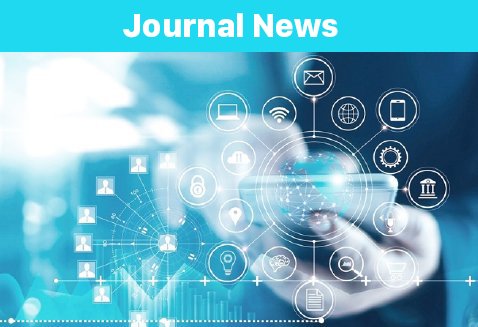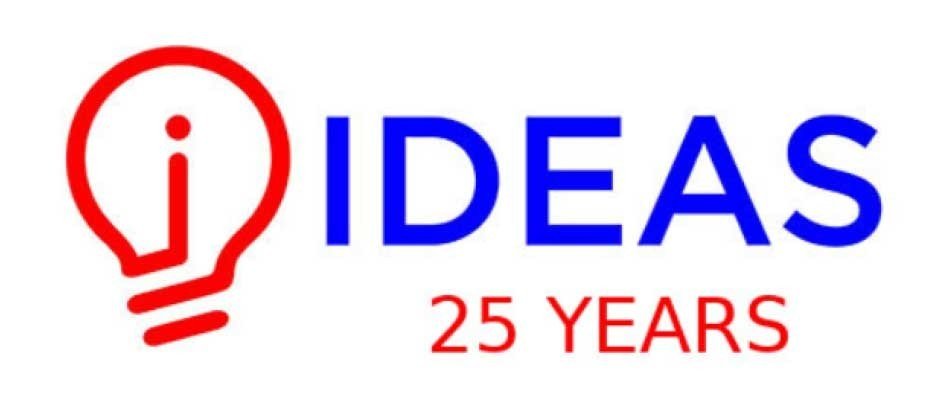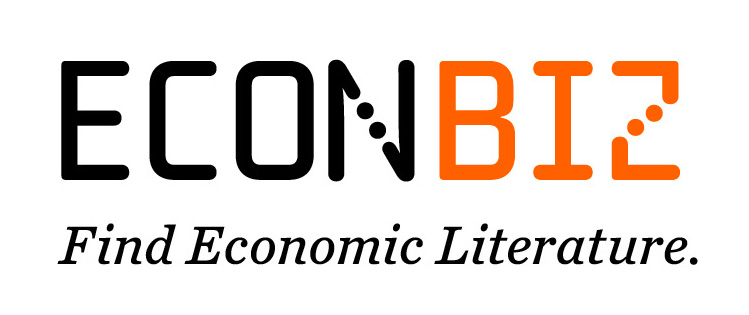| ISSN | 2615-9813 |
| ISSN (số cũ) | 1859-3682 |
Số 228 | Tháng 3/2025
Ảnh hưởng của nội dung mạng xã hội đến quyết định lựa chọn điểm đến du lịch của du khách – Nghiên cứu trường hợp Thành Phố Hồ Chí Minh
Bùi Đức Sinh, Trương Đình Thái, Nguyễn Thị Ngọc Nga
Tóm tắt:
Mạng xã hội (MXH) đang ngày càng trở thành một yếu tố then chốt định hình hành vi du lịch trong bối cảnh hiện đại. Nghiên cứu này tập trung phân tích ảnh hưởng của nội dung MXH, bao gồm nội dung do doanh nghiệp tạo ra (TOC) và nội dung do người dùng tạo ra (UGC), đến quyết định lựa chọn điểm đến du lịch (DeT) của du khách tại Thành phố Hồ Chí Minh (TP. HCM). Dữ liệu được thu thập từ 314 khách du lịch thông qua khảo sát trực tiếp, sử dụng phương pháp chọn mẫu thuận tiện. Kết quả phân tích Mô hình cấu trúc tuyến tính (SEM) chỉ ra rằng cả TOC và UGC đều có ảnh hưởng đáng kể đến nhận thức và tình cảm của du khách đối với điểm đến, từ đó hình thành hình ảnh tổng quát tích cực và thúc đẩy quyết định lựa chọn. Nghiên cứu đã làm rõ vai trò trung gian của nhận thức và cảm xúc đối với điểm đến trong mối quan hệ giữa nội dung MXH và ý định lựa chọn điểm đến của du khách. Những phát hiện này mang lại ý nghĩa thực tiễn cho các nhà quản lý và doanh nghiệp trong lĩnh vực du lịch, góp phần xây dựng các chiến lược tiếp thị bền vững và hiệu quả hơn thông qua việc khai thác tiềm năng của MXH.
Tài liệu tham khảo:
- Abdelghani, A. (2023). The impact of social media on the choice of incoming tourists to Egypt for tourism and hospitality service suppliers14(14), 65-138. https://doi.org/10.21608/mkaf.2023.326832.
- Araújo, A., Cardoso, L., Araújo, N., & Dias, F. (2019). Understanding the role of destination imagery in mountain destination choice. Evidence from an exploratory research. European Journal of Tourism Research, 22, 151-165. https://doi.org/10.54055/ejtr.v22i.381.
- Bilynets, I., Cvelbar, L., & Dolničar, S. (2021). Can publicly visible pro-environmental initiatives improve the organic environmental image of destinations? Journal of Sustainable Tourism, 31(1), 32-46. https://doi.org/10.1080/09669582.2021.1926469.
- Buckley, Patrick & Lee, Paul. (2018). The impact of extra-curricular activity on the student experience. Active Learning in Higher Education. 22. https://doi.org/10.1177/1469787418808988.
- Caber, M., González‐Rodríguez, M., Albayrak, T., & Simonetti, B. (2020). Does perceived risk really matter in travel behavior? Journal of Vacation Marketing, 26(3), 334-353. https://doi.org/10.1177/1356766720927762.
- Carballo, R., León, C., & Carballo, M. (2019). Fighting overtourism in Lanzarote (Spain). Worldwide Hospitality and Tourism Themes, 11(5), 506-515. https://doi.org/10.1108/whatt-06-2019-0043.
- Chen, B., Zhu, Y., He, X., & Zhou, C. (2023). Analysis of high-quality tourism destinations based on spatiotemporal big data—a case study of Urumqi. Land, 12(7), 1425. https://doi.org/10.3390/land12071425.
- Chiu, W., Zeng, S., & Cheng, P. (2016). The influence of destination image and tourist satisfaction on tourist loyalty: A case study of Chinese tourists in Korea. International Journal of Culture Tourism and Hospitality Research, 10(2), 223-234. https://doi.org/10.1108/ijcthr-07-2015-0080.
- Dias, F., & Cardoso, L. (2017). How can brand equity for tourism destinations be used to preview tourists’ destination choice? An overview from the top of tower of Babel. Tourism & Management Studies, 13(2), 13-23. https://doi.org/10.18089/tms.2017.13202.
- Dedeoğlu, B., Bilgihan, A., Ye, B., Wang, Y., & Okumuş, F. (2020). The role of elaboration likelihood routes in relationships between user-generated content and willingness to pay more. Tourism Review, 76(3), 614-638. https://doi.org/10.1108/tr-01-2019-0013.
- Fornell, C., & Larcker, D. F. (1981). Structural Equation Models with Unobservable Variables and Measurement Error: Algebra and Statistics. Journal of Marketing Research, 18, 382-388. http://dx.doi.org/10.2307/3150980.
- Fuentes, R., González, C., & Fuentes, M. (2021). Gender as moderator of the influence of tourists’ risk perception on destination image and visit intentions. Tourism Review. https://doi.org/10.1108/tr-02-2021-0079.
- Ghorbanzadeh, D., Закиева, Р., Kuznetsova, M., Ismael, A., & Ahmed, A. (2022). Generating destination brand awareness and image through the firm's social media. Kybernetes, 52(9), 3292-3314. https://doi.org/10.1108/k-09-2021-0931.
- Guijin, D., & Wu, J. (2022). Influence of tourism safety perception on destination image: A case study of Xinjiang, China. Sustainability, 14(3), 1663. https://doi.org/10.3390/su14031663.
- Gulati, S. (2022). Unveiling the tourist’s social media cycle: Use of social media during travel decision-making. Global Knowledge Memory and Communication, 73(4/5), 575-595. https://doi.org/10.1108/gkmc-06-2022-0134.
- Guleria, A. (2023). The impact of memorable tourism experiences on customer-based destination brand equity: The mediating role of destination attachment and overall satisfaction. Journal of Hospitality and Tourism Insights, 7(4), 1994-2013. https://doi.org/10.1108/jhti-03-2023-0220.
- Hair, J. F., Hult, G. T. M., Ringle, C. M., Sarstedt, M., & Thiele, K. O. (2017). A Primer on Partial Least Squares Structural Equation Modeling (PLS-SEM) (2nd ed.). SAGE Publications.
- Hasan, A. (2023). Factors influencing halal tourism destinations revisit intentions among Muslim travelers of Bangladesh: The mediating role of emotional attachments. Journal of Islamic Marketing, 15(3), 720-744. https://doi.org/10.1108/jima-02-2023-0045.
- Hansen, E., & Nybakk, E. (2018). Response to the global financial crisis: a follow-up study. Journal of Innovation and Entrepreneurship, 7(1). https://doi.org/10.1186/s13731-018-0087-2.
- Hays, S., Page, S. J., & Buhalis, D. (2013). Social media as a destination marketing tool: Its use by national tourism organisations. Current Issues in Tourism, 16(3), 211-239. https://doi.org/10.1080/13683500. 2012.662215.
- Henseler, J., Ringle, C. M., & Sarstedt, M. (2015). A new criterion for assessing discriminant validity in variancebased structural equation modeling. Journal of the Academy of Marketing Science, 43(1), 115-135. https://doi.org/10.1007/s11747-014-0403-8.
- Hijriah, N., & Dai, S. (2020). Perception of foreign tourists towards Gorontalo tourism destinations. Journal Dimensie Management and Public Sector, 1(1), 23-30. https://doi.org/10.48173/jdmps.v1i1.108.
- Huang, H., Mao, L., Wang, J., & Zhang, J. (2015). Assessing the relationships between image congruence, tourist satisfaction, and intention to revisit in marathon tourism: The Shanghai International Marathon. International Journal of Sports Marketing and Sponsorship, 16(4), 46-66. https://doi.org/10.1108/ijsms-16-04-2015-b005.
- Hysa, B., Karasek, A., & Zdonek, I. (2021). Social media usage by different generations as a tool for sustainable tourism marketing in Society 5.0 idea. Sustainability, 13(3), 1018. https://doi.org/10.3390/su13031018.
- Kaosiri, Y., Fiol, L., Tena, M., Artola, R., & García, J. (2017). User-generated content sources in social media: A new approach to explore tourist satisfaction. Journal of Travel Research, 58(2), 253-265. https://doi.org/10.1177/0047287517746014.
- Kim, S., Kim, H., & Yang, S. (2021). Why not this destination? The effects of travel constraints on destination image formation for independent travelers. International Journal of Tourism Research, 23(6), 1073-1085. https://doi.org/10.1002/jtr.2463.
- Kline, R.B. (2011) Principles and Practice of Structural Equation Modeling. Guilford Press, New York.
- Kozioł-Nadolna, K., & Beyer, K. (2021). Determinants of the decision-making process in organizations. Procedia Computer Science. 192. 2375-2384.
- Lestari, N., & Pratika, Y. (2020). Tourist perception of the intention to visit green open space. Jurnal Inovasi Ekonomi, 5(1). https://doi.org/10.22219/jiko.v0i0.11018.
- Mai Thị Kiều Lan & Hoàng Trọng Hùng. (2021). Ảnh hưởng của nhận thức trách nhiệm xã hội điểm đến du lịch đến ý định quay trở lại của du khách: trường hợp nghiên cứu tại Đà lạt. Hue University Journal of Science Economics and Development, 130(5A). https://doi.org/10.26459/hueunijed.v130i5a.6307.
- Mary, S. (2023). Influences of social media in travel decision making. Rest Journal on Banking Accounting and Business, 2(4), 30-39. https://doi.org/10.46632/jbab/2/4/4.
- Miao, B., Liang, Y., & Suo, Y. (2023). The influence of organizational social network on enterprise collaborative innovation—Mediating role of knowledge sharing and moderating effect of digital construction. IEEE Access, 11, 5110-5122. https://doi.org/10.1109/access.2023.3236398.
- Mitsugi, J., Choi, Y., Lee, C., & Ahmad, M. (2020). Effects of place attachment and image on revisit intention in an ecotourism destination: Using an extended model of goal-directed behavior. Sustainability, 12(18), 7831. https://doi.org/10.3390/su12187831.
- Munar, A., & Jacobsen, J. (2013). Trust and involvement in tourism social media and web-based travel information sources. Scandinavian Journal of Hospitality and Tourism, 13(1), 1-19. https://doi.org/10.1080/15022250.2013.764511.
- Nugzar, T., & Ekaterine, U. (2023). The effect of social media marketing on consumer behavior of tourism destinations. SPM, 1(1), 123-133. https://doi.org/10.37075/spm.2022.13.
- Nur’afifah, O., & Prihantoro, E. (2021). The influence of social media on millennial generation about travel decision-making. Jurnal the Messenger, 13(3), 238. https://doi.org/10.26623/themessenger.v13i3.2328.
- Nybakk, E., Lunnan, A., Jenssen, J.I. & Crespell, P. 2013. The importance of social networks in the Norwegian firewood industry. Biomass and Bioenergy. https://doi.org/10.1016/j.biombioe.2012.11.018.
- Patwardhan, V., Ribeiro, M., Payini, V., Woosnam, K., Mallya, J., & Gopalakrishnan, P. (2019). Visitors’ place attachment and destination loyalty: Examining the roles of emotional solidarity and perceived safety. Journal of Travel Research, 59(1), 3-21. https://doi.org/10.1177/0047287518824157.
- Phucharoen, C. (2023). Social media sites and nightlife tourism: An empirical study of tourist decision-making on nightlife entertainment consumption. International Journal of Tourism Cities, 9(3), 751-770. https://doi.org/10.1108/ijtc-11-2021-0224.
- Rahman, Md. A., Islam, P., & Akash, P. (2021). Effects of co-curricular activities on student’s academic performance by machine learning. Current Research in Behavioral Sciences, 2,100057.
- Raihan, S., Sudarmiatin., & Sutrisno. (2019). The effect of tourism attractiveness and destination image on revisit intention through tourist satisfaction (Study on domestic tourists of Mount Bromo, Malang, East Java). European Journal of Business and Management, 11(11). https://doi.org/10.7176/ejbm/11-11-12.
- Shahzad, D. (2024). Social media adoption in tourism promotion and tourist intention: A diffusion of innovation approach. JMES, 4, 107-117. https://doi.org/10.56536/jmes.v4i.49.
- Smith, K., & Christakis, N. (2008). Social networks and health. Annual Review of Sociology, 34(1), 405-429. https://doi.org/10.1146/annurev.soc.34.040507.134601.
- Sriboonlue, O. (2023). The effects of destination awareness, perception of destination, and destination image on tourists’ intention to travel toward ASEAN countries. GBAFR, 7(2), 9-22. https://doi.org/10.60101/gbafr.2023.267976.
- Stylidis, D. (2020). Exploring resident–tourist interaction and its impact on tourists’ destination image. Journal of Travel Research, 61(1), 186-201. https://doi.org/10.1177/0047287520969861.
- Sultan, M., Sharmin, F., Bădulescu, A., Gavrilut, D., & Xue, K. (2021). Social media-based content towards image formation: A new approach to the selection of sustainable destinations. Sustainability, 13(8), 4241. https://doi.org/10.3390/su13084241.
- Sun, W., Tang, S., & Fang, L. (2021). Examining perceived and projected destination image: A social media content analysis. Sustainability, 13(6), 3354. https://doi.org/10.3390/su13063354
- Văn Phương và Nguyễn Linh. (2022). Đánh giá hình ảnh điểm đến du lịch hồ ba bể của khách du lịch nội địa. Tnu Journal of Science and Technology, 227(09), 415-423. https://doi.org/10.34238/tnu-jst.5912
- Wardhani, W., Pratiwi, R., Hartono, S., Editya, E., & Dasmadi, D. (2020). Crowdworking: Is it beneficial in destination marketing? https://doi.org/10.2991/aebmr.k.200305.044
- Wen, P., Wang, S., Chen, D., & Wang, R. (2018). Research on destination image perception based on digital footprint of tourism—Taking Xiran as an example. https://doi.org/10.2991/iccessh-18.2018.280.
- Whang, H., Yong, S., & Ko, E. (2016). Pop culture, destination images, and visit intentions: theory and research on travel motivations of chinese and russian tourists. Journal of Business Research, 69(2), 631-641. https://doi.org/10.1016/j.jbusres.2015.06.020.
- Wu, C., Ho, M., Le, T., & Nguyen, M. (2022). The COVID-19 pandemic and factors influencing the destination choice of international visitors to Vietnam. Sustainability, 15(1), 396. https://doi.org/10.3390/su15010396.
- Xu, H., Cheung, L., Lovett, J., Duan, X., Pei, Q., & Liang, D. (2021). Understanding the influence of user-generated content on tourist loyalty behavior in a cultural world heritage site. Tourism Recreation Research, 48(2), 173-187. https://doi.org/10.1080/02508281.2021.1913022.
- Yoo, C., Yoon, D., & Park, E. (2018). Tourist motivation: An integral approach to destination choices. Tourism Review, 73(2), 169-185. https://doi.org/10.1108/tr-04-2017-0085.
- Yunduk, J., Yu, A., & Kim, S. (2019). The antecedents of tourists’ behavioral intentions at sporting events: The case of South Korea. Sustainability, 12(1), 333. https://doi.org/10.3390/su12010333.
- Yuzhanin, S., & Fisher, D. (2016). The efficacy of the theory of planned behavior for predicting intentions to choose a travel destination: A review. Tourism Review, 71(2), 135-147. https://doi.org/10.1108/tr-11-2015-0055.
- Zhang, K., Chen, Y., & Lin, Z. (2020). Mapping destination images and behavioral patterns from user-generated photos: A computer vision approach. Asia Pacific Journal of Tourism Research, 25(11), 1199-1214. https://doi.org/10.1080/10941665.2020.1838586.
- Zhou, X., Wong, J., & Wang, S. (2022). Memorable tourism experiences in red tourism: The case of Jiangxi, China. Frontiers in Psychology, 13. https://doi.org/10.3389/fpsyg.2022.899144.
The Impact of Social Media Content on Tourists' Destination Choice Decisions: A Case Study of Ho Chi Minh City
Abstract:
Social media has become a crucial factor in shaping tourist behavior in the digital age. This study investigates the impact of social media content—specifically tour-operator-generated content (TOC) and user-generated content (UGC)—on tourists' destination choice decisions, using Ho Chi Minh City as a case study. Data were collected from 314 tourists through direct surveys using a convenience sampling method. Structural Equation Modeling (SEM) results reveal that both TOC and UGC significantly influence tourists' cognitive and affective perceptions of the destination. These perceptions, in turn, shape an overall positive destination image and directly impact destination choice decisions. The study also highlights the mediating role of cognitive and affective destination perceptions in reinforcing the effect of social media content on tourists’ decision-making.







